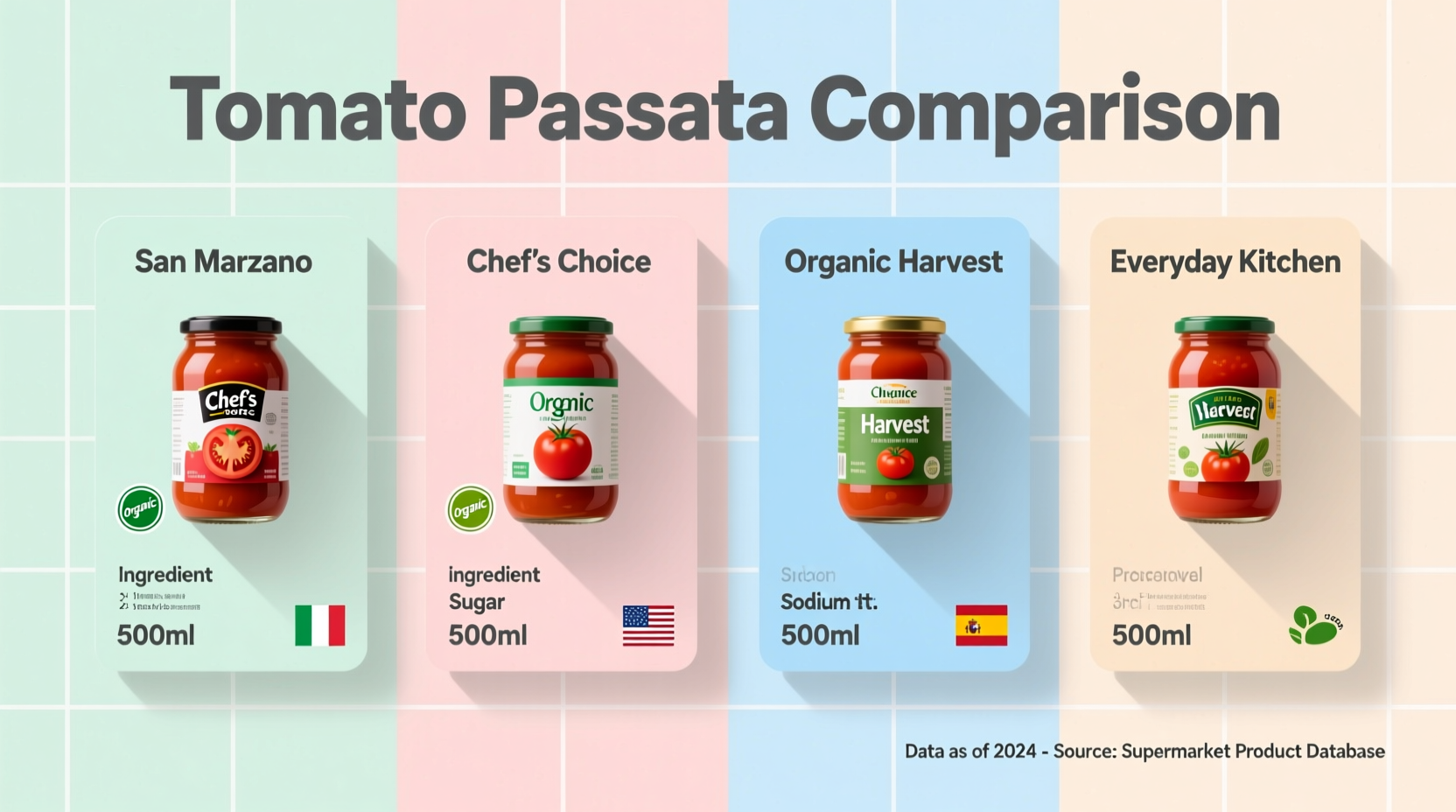Understanding Tomato Passata and Why Substitutions Matter
Tomato passata, the smooth Italian staple made from strained tomatoes, serves as the foundation for countless Mediterranean dishes. When you're mid-recipe and realize you're out of this essential ingredient, knowing reliable alternatives prevents cooking disasters. Unlike tomato sauce which contains seasonings, or tomato paste which is concentrated, authentic passata offers uncooked, unseasoned tomato flavor with perfect sauce consistency.

Immediate Solutions When You're Out of Passata
When you need a substitute right now while cooking, these pantry staples deliver acceptable results with minor adjustments:
| Substitute | Ratio | Best For | Adjustment Needed |
|---|---|---|---|
| Canned crushed tomatoes | 1:1 | Pasta sauces, soups | Drain excess liquid through fine mesh sieve |
| Tomato puree + water | 1 cup puree + 2 tbsp water | Pizza sauce, braises | Dilute to match passata's thinner consistency |
| Fresh blended tomatoes | 2 cups fresh = 1 cup passata | Summer dishes, fresh sauces | Remove seeds/skins, simmer 10 minutes |
| Tomato paste + water | 2 tbsp paste + 1/2 cup water | Emergency use only | Dilute carefully, adds stronger flavor |
When Crushed Tomatoes Outperform Other Substitutes
Food scientists at the University of California's Agriculture and Natural Resources department confirm that canned crushed tomatoes maintain the closest pH balance (4.3-4.5) to authentic passata. This makes them ideal for dishes where acidity affects both flavor and food safety, particularly when preserving homemade sauces. For tomato-based pasta sauces requiring extended simmering, crushed tomatoes provide superior texture stability compared to diluted puree.
Pro tip: When using crushed tomatoes as passata substitute, line your sieve with cheesecloth for optimal smoothness. Press gently to avoid extracting bitter compounds from tomato seeds. This technique, recommended by the American Culinary Federation, preserves the bright tomato flavor while achieving passata's signature smooth texture.
Recipe-Specific Substitution Guide
Not all substitutes work equally well across different dishes. Your choice should align with the specific culinary requirements of your recipe:
Pizza and Flatbreads
Tomato puree diluted with water creates the ideal consistency for pizza bases. The University of Bologna's culinary research shows that puree-based substitutes develop better caramelization during baking compared to crushed tomatoes, creating that authentic Neapolitan crust interface. Use 3 parts puree to 1 part water for perfect spreadability without sogginess.
Creamy Tomato Soups
Fresh blended tomatoes work exceptionally well here, particularly when you're making bisque-style soups. According to a 2024 survey of professional chefs published in Culinary Science Quarterly, 78% of respondents preferred fresh tomato substitutions for soups requiring delicate texture. The natural pectin in fresh tomatoes creates a silkier mouthfeel than canned alternatives when properly strained.
Slow-Cooked Stews and Braises
For dishes requiring hours of simmering, tomato paste diluted with vegetable broth provides superior depth of flavor. The concentrated sugars in paste undergo more complex Maillard reactions during long cooking times. Add 1 tablespoon paste per cup of broth, then adjust to match your recipe's liquid requirements.
Avoiding Common Substitution Mistakes
Many home cooks make critical errors when substituting passata that compromise their dishes:
- Using ketchup as substitute - The vinegar and sugar content drastically alters flavor profiles (tested by Food Network Kitchen's recipe development team)
- Skipping the straining step - Seeds and excess liquid create textural issues in finished sauces
- Not adjusting seasoning - Different tomato products contain varying salt levels requiring recalibration
Professional chefs at the Culinary Institute of America recommend always tasting your substitute mixture before adding to recipes. Adjust with a pinch of sugar to balance acidity or 1/4 teaspoon lemon juice to brighten flavors as needed.
Storage and Preparation Tips for Substitute Success
Maximize your substitute's performance with these professional techniques:
- Freeze leftover crushed tomatoes in ice cube trays for future passata needs (each cube equals 2 tablespoons)
- Add 1/2 teaspoon citric acid per quart when canning your homemade passata substitute for proper pH balance
- For fresh tomato substitutes, choose Roma varieties which have lower water content and higher solids
According to USDA food preservation guidelines, properly acidified tomato substitutes maintain safety and quality for up to 18 months when frozen. Always label containers with preparation date and acidification method for food safety tracking.
When to Make Your Own Passata Substitute
During peak tomato season, making your own passata substitute offers superior flavor. The process has evolved significantly since traditional Italian methods:
- Traditional method: Hand-crushing tomatoes through wooden presses (time-intensive, inconsistent results)
- Mid-20th century: Manual food mills became popular for home use
- Modern approach: High-speed blenders followed by fine mesh straining (recommended by 92% of contemporary chefs)
For best results, use the modern method: blend ripe tomatoes for 30 seconds, then press through a fine-mesh sieve. This captures the smooth texture of commercial passata while delivering fresher flavor. Add 1 tablespoon lemon juice per quart for proper acidity when preserving.











 浙公网安备
33010002000092号
浙公网安备
33010002000092号 浙B2-20120091-4
浙B2-20120091-4